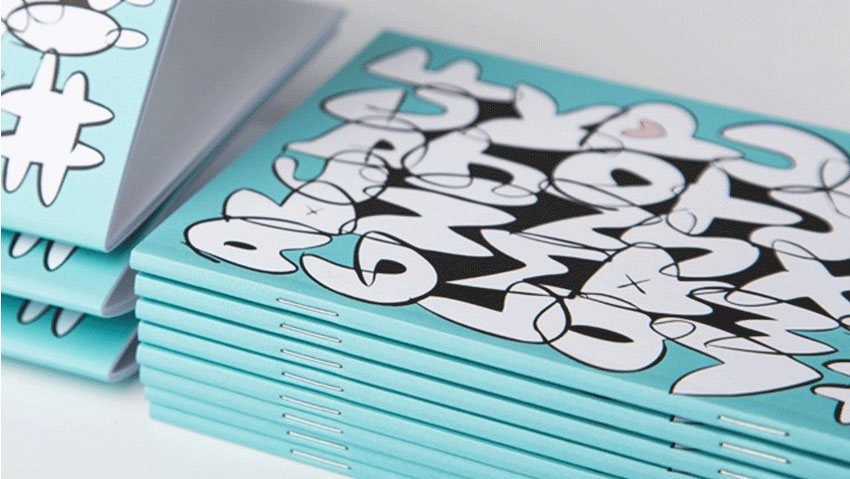Bindings Best Kept Secret:
Square Back Binding
Think of this technique as a perfect-bound booklet that uses 2 staples instead of glue. Intrigued? Trust me, it gets even better!
Watch the video to quickly discover how you can enjoy a “champagne look on a Saddle-Stitch budget!”
Champagne Taste
What looks like a perfect-bound booklet is actually a saddle-stitched piece, which is then squashed (technical term 😉 ) at the spine to create a square edge. Think of it like a perfect-bound booklet with two staples instead of glue.
In many cases, with smaller print runs these days, perfect binding is not a cost effective option anymore. So more than 10 years ago the clever engineers at the UK’s Watkiss Automation Ltd. and Sweden’s Plockmatic developed a special module that was added onto their booklet makers. This “square folder” applies pressure to the spine of the saddle-stitched book to give it the “square back” found in perfect-bound books.
But there is more to it than just a great looking spine. When it comes to saddle stitching, one pet peeve is the large center gap you can sometimes find in the finished piece.
“With the square edge, you virtually have no gap,” says Bill Gross, North American sales director at Plockmatic. “The pressure that is applied at the end of the binding process can be adjusted to ensure that your book lays flat.” Oh happy days.
Short and Budget Friendly
Plockmatic has teamed with Xerox to make their booklet maker available to run in line with any of their digital presses. But do not despair, other press manufacturers have access to the technology as well. Naturally, running this in line is swift and cost effective.
“There is basically no extra cost involved to create the square back,” Bill elaborates. “Or better said, it is so minimal that it is not worth mentioning.”
The Booklet Maker even has a manual feed option if you only need a handful of books.
Now I know what you are wondering: What about longer runs on offset presses? Not to worry. The Booklet Maker with square-back technology can run as an off-line process as well and thus handle all your longer-run projects – magazines, brochures, the lot.

Let’s Talk Specifics
Page count: To see at least a hint of the square edge, you need a minimum of 6 sheets or 24 pages in your booklet. The more pages you have, the more you will see the square edge, and thus the more you can use the spine to print your message. The most you can bind is 200 pages (50 sheets), or to be more precise, a ¼ inch thickness, as every paper has a different caliper.
Spine: The thickness of your spine depends, of course, on your page count and the caliper of your paper. With the help of special imposition software your printer will be able to give you the exact real estate you have to play with. And, at least in the case of the Plockmatic PRO Booklet Maker, you have some leverage (not a lot) when it comes to where you want to position the staples. How cool is that?
Paper: Every Booklet Maker works with coated or uncoated paper, and you can even mix and match – an uncoated cover with coated inside pages – no problem. In the digital world the press, and the binder, just pull from a different tray.
Weight: As with “regular” saddle stitching, you can use sheets from 20 lb. Text to 300 gsm (around 110 lb. Cover).
Size: There is, of course, your regular 8.5 x 11” finished size, but Booklet Makers are set to work in a digital environment so can easily accommodate flat sheet sizes of 12.6 x 18”.
Where Can I Get…
That was my most pressing question and I am sure it is yours, too. Interestingly enough this technology should be widely available in North America. Very widely.
“We sell more than 1,000 Plockmatic Pro Booklet Makers every year,” Bill assures me. “And in 96% of the cases the printer includes the square-back option.” And as previously mentioned, there are other manufacturers out there as well. So chances are your print service provider has one.
So why have we not heard about this before? Probably because we did not know this option existed, and thus never thought to ask. So call your print service provider and see if they offer it.

is the founder of PaperSpecs.com. An award winning graphic designer with more than 20 years of experience in the U.S., Germany and Australia, she combines a passion for paper and print with a hands-on approach to sharing her knowledge.
